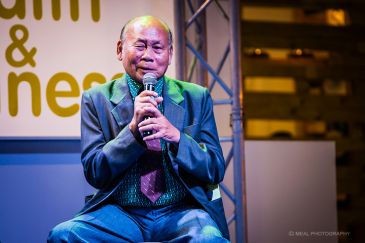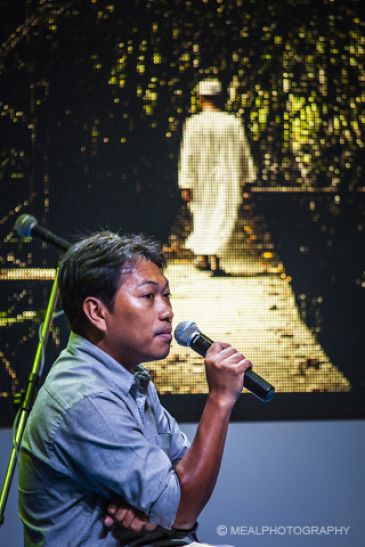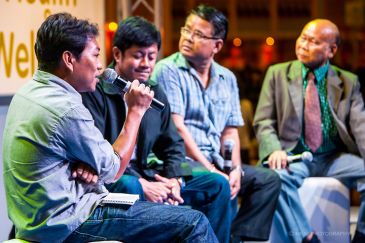Ethnic diversity at the edge of ASEAN’s border 3 : Khmer and Muslim
11, July 2012

Khmer: Passing culture through travel.
Whenever people talk about ASEAN they mostly think about connection between each country. However, this connection isn’t recently happen, since in the past people in this region traveled among all ethnics group and built various types of connection and relation. Once they traveled to other places they brought their culture with them then they shared those ideas and cultures. Dr. Sorajet Warakamvichai (Top photo), archaeological expert, presents this idea through Khmer people who inherit the cultural legacy from Indian people.
“Structure architecture style especially “Prasat”(means palace or temple) in Burirum, Surin and Sisaket in Thailand was affected from Khmer culture since the ancient Khmer empire. Not only architecture but language as well, some Thai words has their roots in Khmer culture. In fact, Khmer people, or Cambodians right now, were ancient Indian who traveled from India to locate themselves in Southeast Asia. Many beliefs for instance, angels, religion or Brahman were passed on and presented in art forms, painting, sculpture or architecture, as we could see in Prasat in both Thai and in Cambodia.”
Ancient knowledge, culture and language could are invaluable. Sadly, nowadays those legacies are continuing to fade away. Dr. Sorajet said that in many areas new generation people could not speak their own local language anymore.
“Ethnic groups in these days seems gradually declined even in Thailand. In some place they must put on sign to request people to use local language with their children but it is not successful. Older people, 20-30, still can speak Khmer language but teenager under 15 already forgot their local language”.
Muslim: Faith among conflict.
Culture and traditions in southern of Thailand comes from religion beliefs. Religion, Islam, shapes cultures and the way people lives. The echo of warship sound and deep root belief make Thanet Ngamsom, traveling photographer and writer of OSOTHO magazine, who accustom with assignments in southern provinces fell in love with these beautiful traditions.
“I have been working with OSOTHO since 1999. Many times I went to 3 southern provinces (where violence occurred) to cover stories of Muslim people. Even though I’m Buddhist but I had a chance to take photo during the warship. I didn’t understand Malay language but I could sense calmness and tranquility. I saw this mystery as the charm of Muslim. As stranger, I received a lot of kindness and smile. It was a common scene that I could see everywhere. But after the Krue Sae Mosque incident in 2004 everything had completely changed. Everywhere were filled with fear, hatred and question. These areas are not safe anymore.”
Thanet also said that the situation was very severe. If he wants to do a document there he will need to ask the military to assist their security. But although the situation couldn’t be any worse, Muslim people still preserve their unique tradition and culture. Their uniqueness becomes symbolic that could be seen in every Muslim community.
“After 2007 situation in 3 southern provinces looks better. I could go back and start shooting documentary again. Government and other religion group gradually learn the conflict. Smile is return and as well as peace. There was one time that I was really impressed. That time I went to Beithong where 95% are Muslim to shoot a document. Before I return to Bangkok, Imam or Islamic priest blessed me with Malay language which actually will use only among Muslim. As a stranger with different religion this is very special and it’s also a sign that say peace is once returned.”

